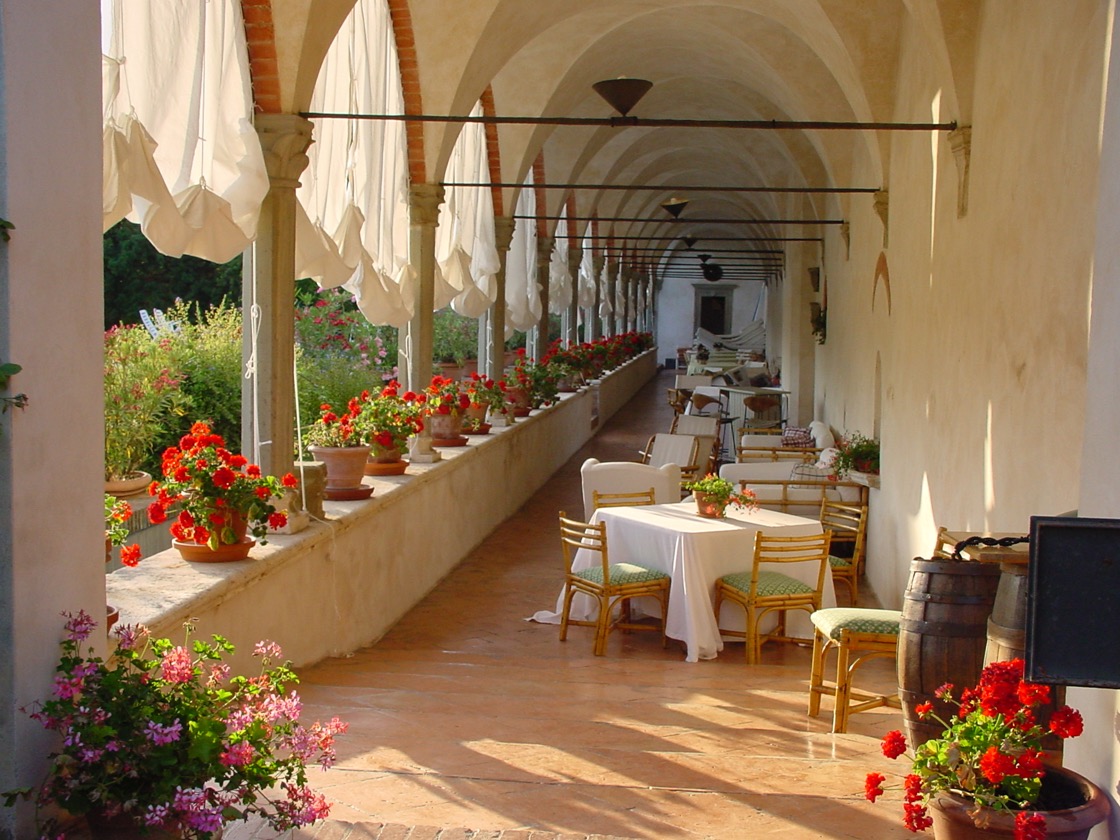A petit clin d'œil to Siena
last update: 11 March 2022
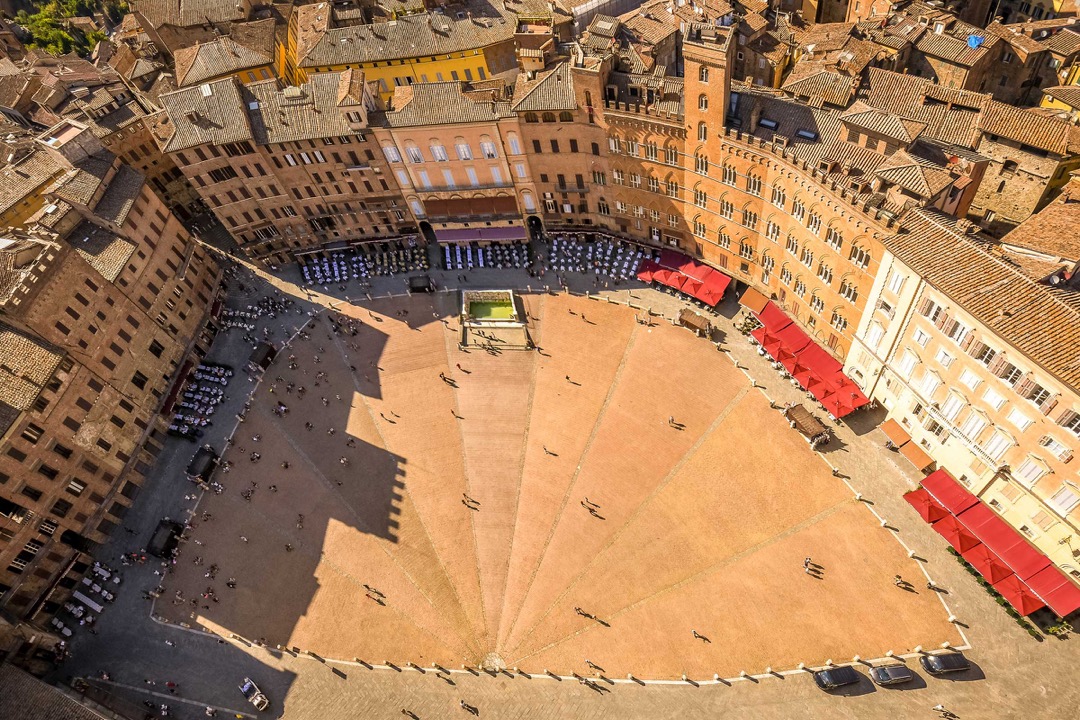
"Siena, the vast piazza, shaped like a horse-shoe,
where the market is held beneath the windows of that crenellated palace
from whose overhanging cornice
a tall, straight tower springs up with a movement
as light as that of a single plume in the bonnet of a captain"
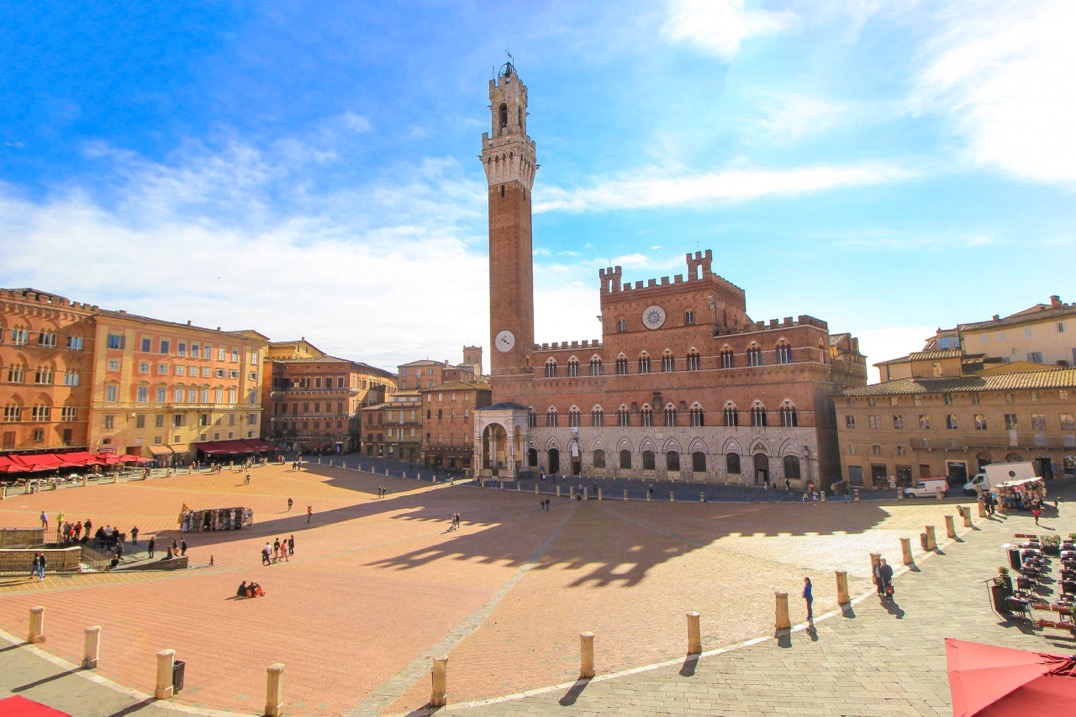
This is quote from Confidence, by Henry James, and I think he captures something quite important about Siena - everything is centred on that single horse-shoe shaped Piazza del Campo home to the Palazzo Pubblico, the town hall.
It's amazing that we last visited Siena for two nights, so just one full day, in June 2002, and have never returned. How is that possible?
Our visit
Our day consisted of a visit to the Piazza del Campo, and a quick look at the façades of the Battistero di San Giovanni Battista and il Duomo.
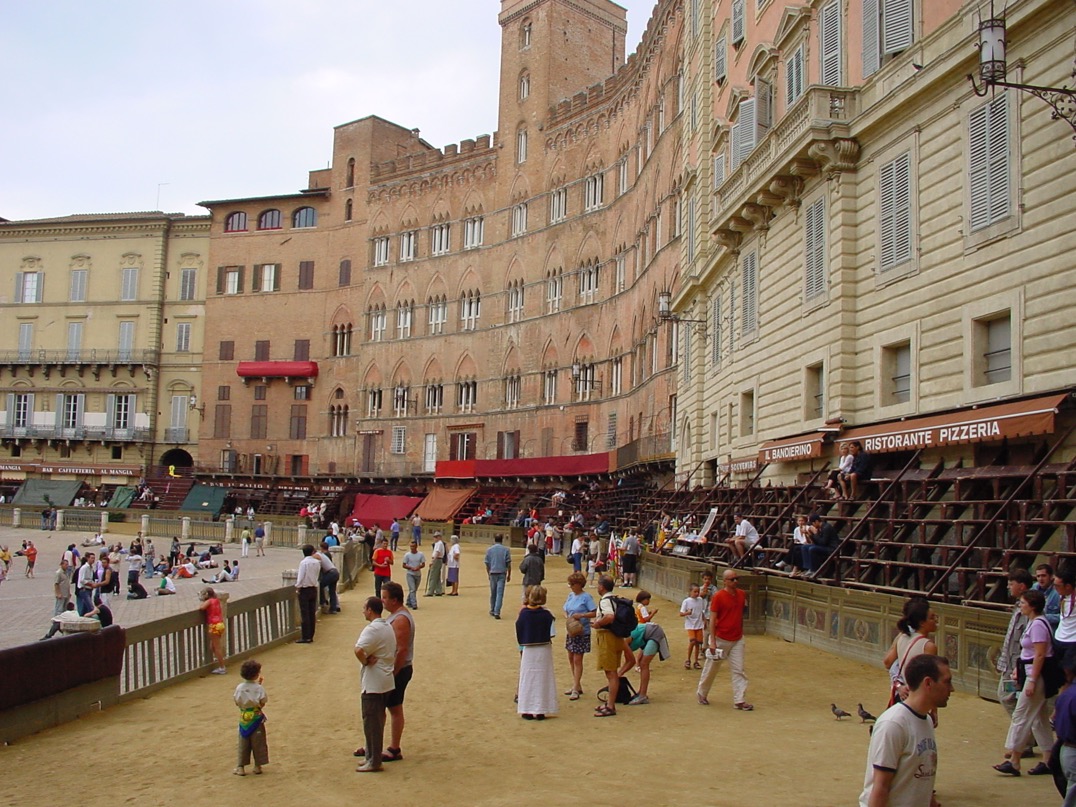
If we compare our photograph from 2002 (above) with the two in the introduction, what do we see? I guess the first thing is that after 20 years, little or nothing has changed. No new buildings, the façades remain untouched by time, and even the colours of the window shutters are the same.
But looking more closely we see stands along the walls with seating, and there is now a central barrier and not just some stone pillars, and is that not sand covering the stone pavement?
Yes, of course, we visited on the 30 June, and the first Palio of the year would be on the 2nd July, just two days away. Two days later, and the piazza would be full and pulsating with the race. Below what I've tried to do is capture a little something of a Palio.
The Palio di Siena takes place twice a year, on the 2nd of July (Palio di Provenzano, in honour of an icon of the Madonna in Santa Maria in Provenzano) and on August 16th (Palio dell'Assunta, in honour of the Virgin Mary's Assumption).

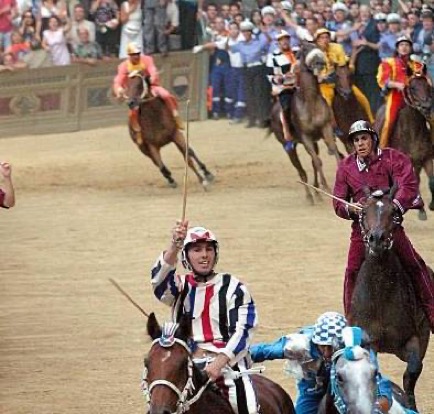
The Palio of 2 July 2002 was won by the Contrada Sovrana dell'Istrice, with the horse Ugo Sancez, ridden by Luca Minisini, detto Dè. It was the contrada's 40th victory, the 2nd for the horse and the 3rd for the rider. The horse only raced in four Palii, but won twice. It was Dè's third victory in seven starts, but despite ridding until 2013 he would never win again. The two photographs above are from that original race.
Istrice were one of the seven contrade pre-selected, because they had not participate in the race on 2 July 2001. The other three participants were drawn by lots (estrazione) on the 26 May 2002 (the three flags were flown from the windows of the town hall). There was also a draw with the seven contrada's that didn't race, to determine the order of the contrade in the parade through the city.
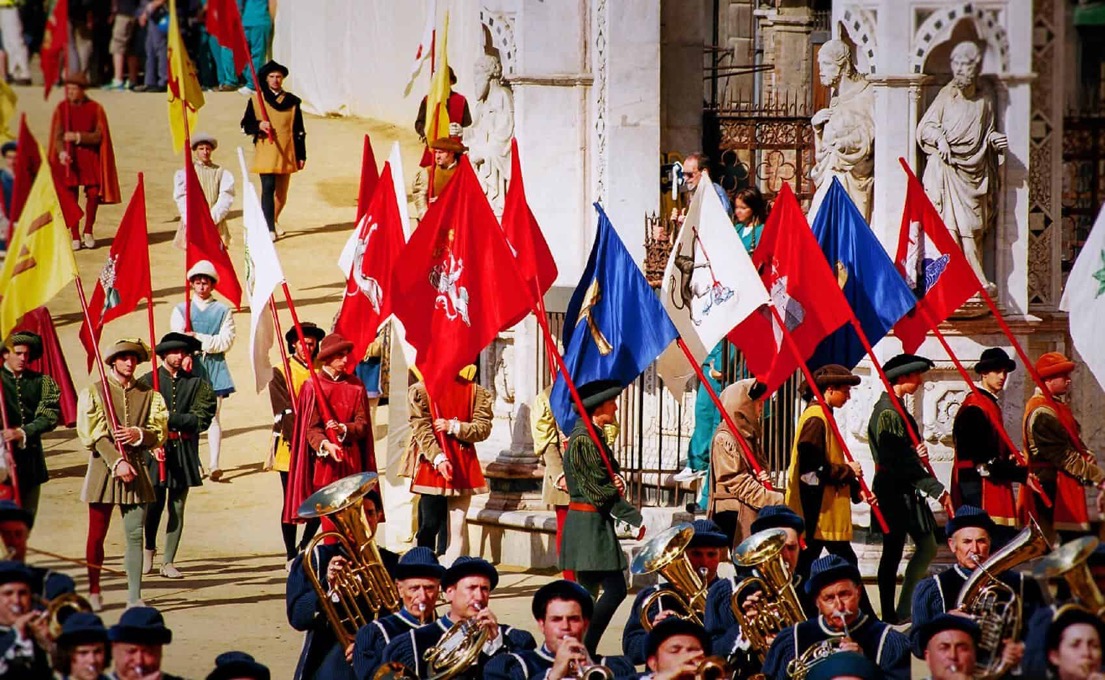
For the race in 2002 there were 83 horses enrolled, but only 47 were admitted to the morning training runs and another 12 were admitted directly to the selection process (the tratta). On the 28 June 2002 there were nine training races, each usually consisting of five horses, with each horse getting only one race. In total, 34 horses were finally admitted to the selection process, but four failed to show up, and three more were excluded by the veterinarian.
The selection process consisted of five races, where the jockey (fantino) Minisini rode a different horse, and Ugo Sancez was ridden by a different jockey. Only then were the horses assigned at random to each jockey, and thus to each contrada. This means that the contrada picks the jockey, but not the horse. And the jockeys only know which horse they will ride four days before the race.
It's worth noting that throughout the winter, the contrade keep in contact with the jockeys and the horse owners. The latter prepare their horses both by making them run other minor palii (in provincia), and by taking them to the training runs organised by the Municipality in the spring. It's only when the final ten contrade are known that each can finalise their choice of jockey and their ideas about the horses on offer.
Before the Palio there are 6 trial runs or heats (le prova), one in the morning and one in the afternoon (which in 2002 was cancelled due to rain). The fifth trial, the one run the evening prior to the official Palio, is the real test (prova generale), while the final run (la provaccia) is dominated by the fact that the jockeys are trying to keep their horses as fresh as possible.
The starting position of each horse is fixed in advance. It is said that the starting position is given in a sealed envelop to the starter just before the race. If, as was the case in 2002, there were false starts, new sealed envelopes are opened with new sets of starting positions. Once the race finally started the starter then leaves, protected by the police from attack by those who felt that their horse had been badly treated.
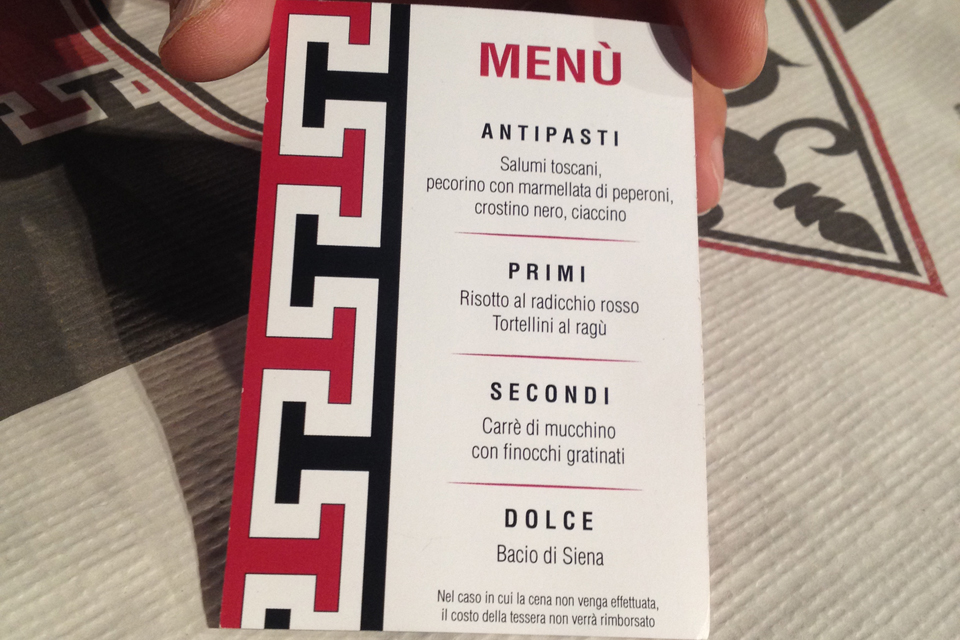
On the eve of the Palio there is a dinner to which guests are admitted. The price typically is around € 50 per person and is, for the district, also a way to raise funds to finance the activities and expenses throughout the year.
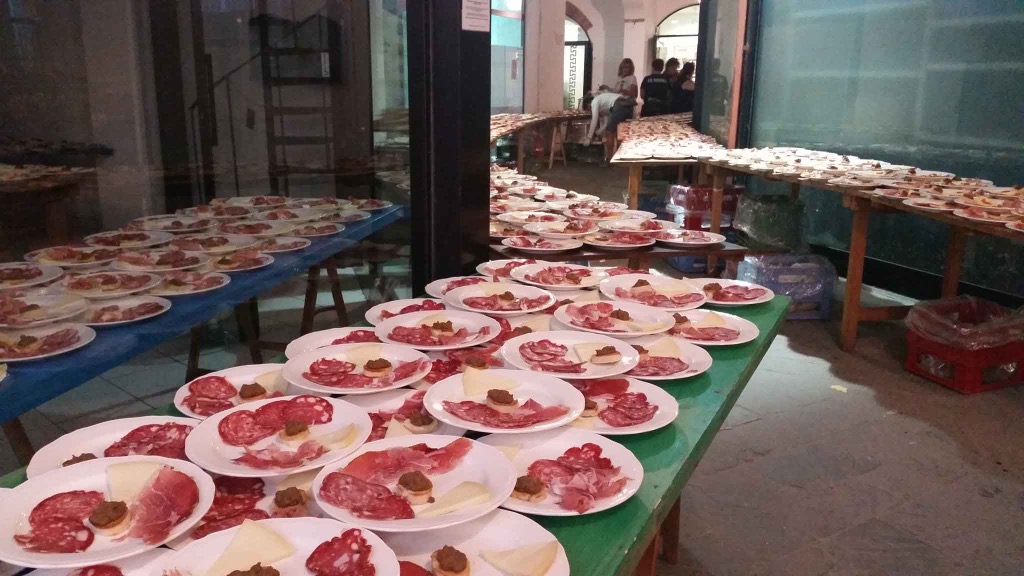
Instead the dinners of the previous evenings, the cenini, are strictly reserved for the contradaioli, to the point that close relatives born in different districts dine separately.

The day of the Palio starts at 8 a.m., in the chapel next to the Palazzo Comunale, where the Bishop celebrates the "Messa del fantino" or a mass for the horse jockeys. It is after this mass that last trial run (la provaccia) takes place.
At 10.30 a.m., in the Palazzo Comunale and in the presence of the mayor, the "segnatura dei fantini" takes place. The name of the jockeys are confirmed and cannot be substituted from that point on.
At around 3 p.m. each contrada performs a blessing ceremony for its horse. This is followed by a parade though the city during which mazzieri (mace bearers), figuranti (supporters) and cavalieri (knights) representing the historical institutions of the city wear la monture, the colours and costumes of the different contrade.
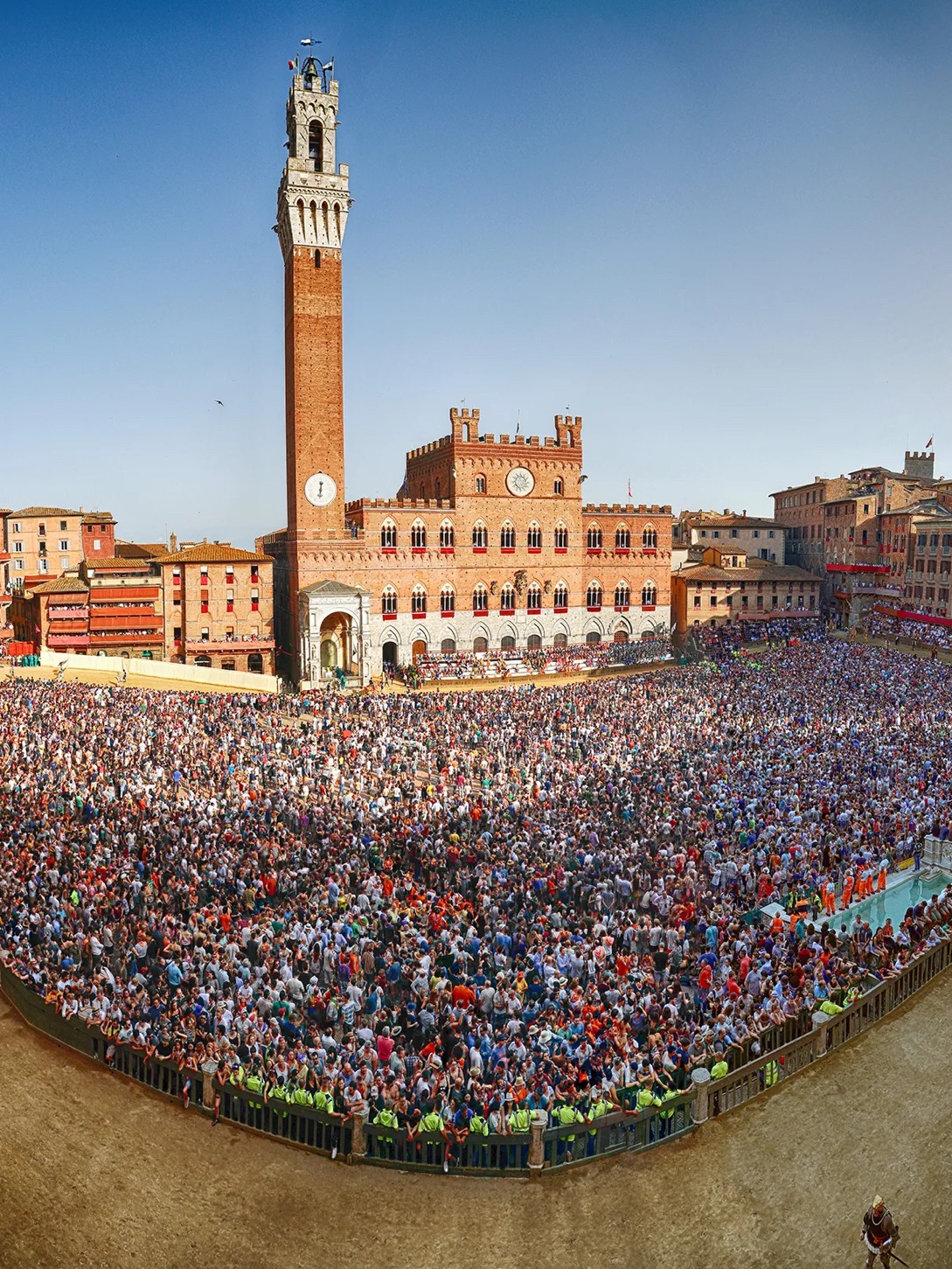
The parade arrives around 5 p.m. at the Piazza del Campo, and ends by around 6.30-7 p.m. Shortly thereafter the explosion of a firecracker signals the entrance of the horses into the piazza. As the jockeys come out, each one receives a nerbo, a whip made out of dried ox sinew, which they can use to prod their horse and irritate the other opponents in the race. The Palio of the 2nd July should start at 19:30, whereas that of the 14 August starts at 19:00.
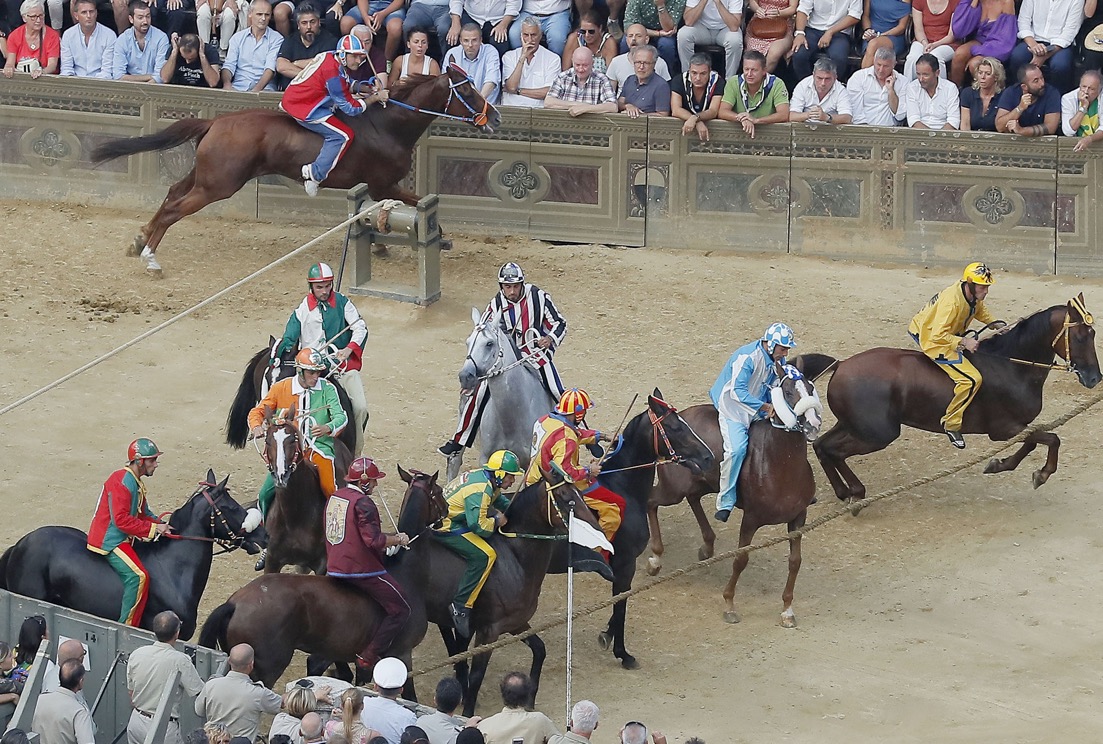
The race starts in the "mossa", an area set up on the piazza delimited by two long pieces of thick rope. The starter (mossiere) receives a sealed envelope and calls the contrade in the order in which they were drawn and checks that the assigned positions at the rope are respected (ai canapi). The first nine contrade take up their assigned positions in the area between the two ropes, while the last one, the tenth (di rincorsa), enters this area at a running gallop thus signalling the start of the race. In fact the back rope defining the "mossa", is slightly shorter on the outside of the track, and this gap (il verroccino) allows the tenth horse to run through. The race only starts when this last jockey decides to make the run. So it's not the starter to who starts the race. He has to determine when that tenth horse is going to run, so that he can release, with a pedal, the front rope that is holding all the horses back.
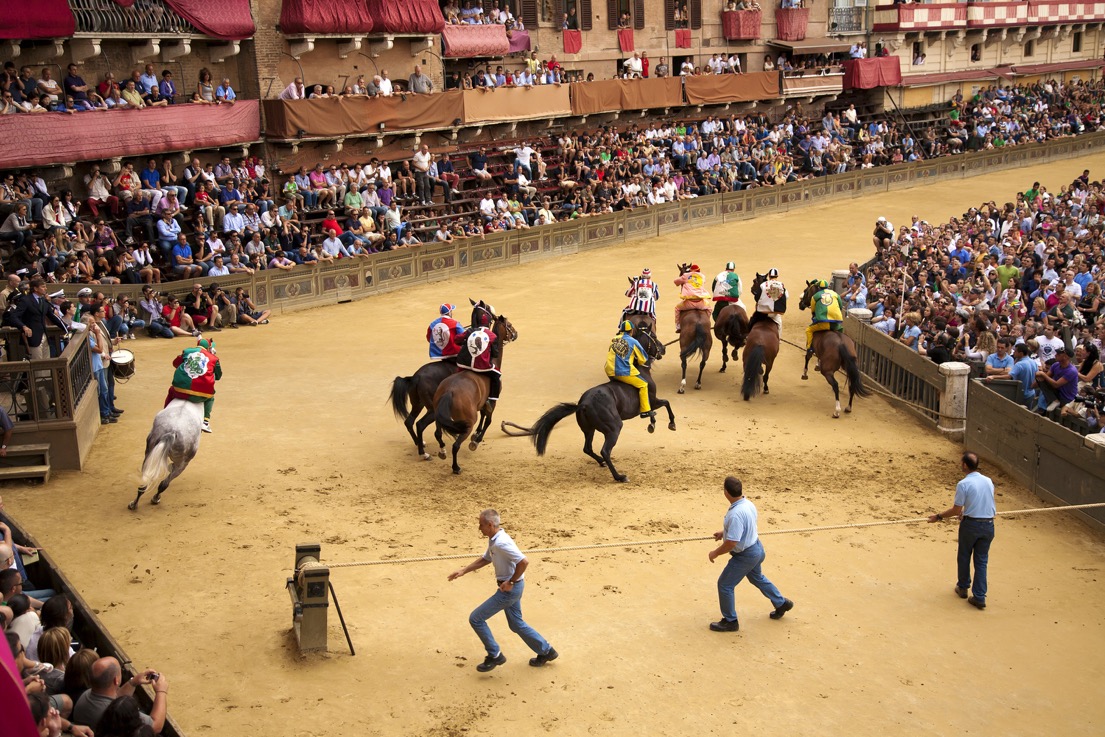
The draw for position is secret and is determined by an automatic device called a "fiasca". The device is a tank in which ten coloured wooden balls (bàrberi) are placed. The tank is shaken and the balls slide into a covered tube in random order, and then the tube is sealed. When the horses and jockeys first enter, the tube is opened, the order written out and placed in a sealed envelope and carried to the starter by the local police.
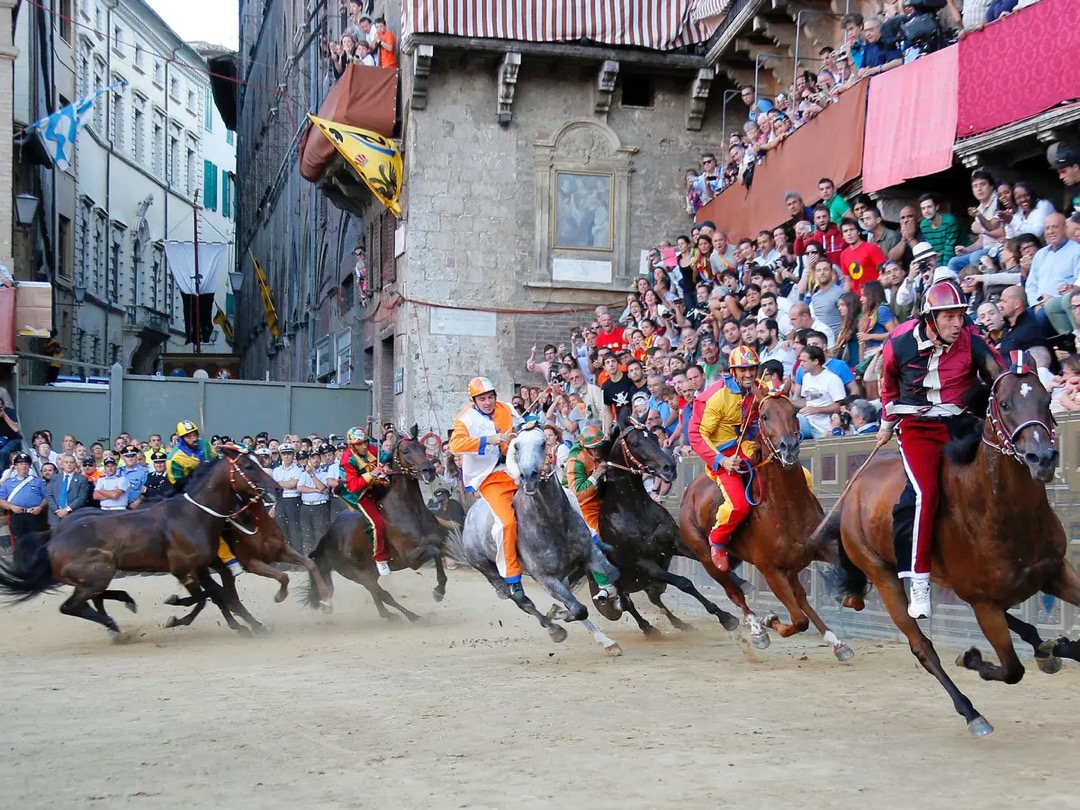
The reality is that the jockey don't just line up and race. Depending on their position in the lineup, they start to "fare i partiti". There are significant rivalries between different contrade, but it's also possible to seek help from friendly jockeys, and maybe also create unfavourable conditions for those rivals. And as you might guess the "rincorsa", the starting horse will be looking to start when their rivals are in poor positions at the rope. In fact, the relationships between contrade have been codified into a formal alliance (alleanza formale), a rivalry (rivalità), and "mancanza di rapporti formali" (lack of formal relations). Istrice has a formal alliance with Bruco since 1665, with Giraffa since 1795, with Civetta since 1933, and with Chiocciola since 1947. Interestingly Istrice also had a formal alliance with Lupa to 1934, when it turned into a formal rivalry. A disagreement occurred over a few meters defining the boundary between the two contrade. But the real problem was that Lupa won in July 1935 whilst Istrice won in August 1935, both on the same horse Ruello. Naturally both launched claims against the other, creating a formal rivalry that still exists today.

A false start is when the jockeys are not in their assigned spots, which can occur quite frequently because the "mossa" is small and the horses are constantly jockeying for the best position, whilst having to keep their place in the lineup. So just getting everyone in place can take some time, with the jockeys being pulled back to recreate the lineup. So the race can start at almost any time. The horses must run three laps around the Campo. The first horse that crosses the finish line, even if he arrives without his jockey (cavallo scosso), wins the race. Below, Remorex won in August 2019 without his jockey.
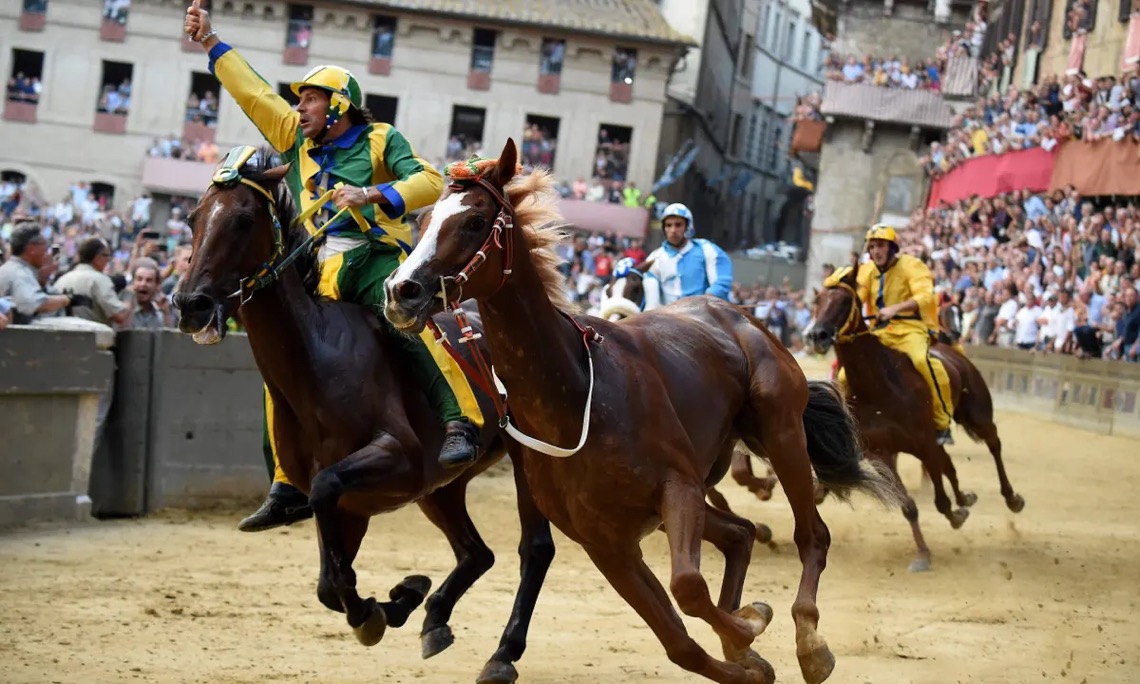
In 2002, the horse Ugo Sancez, was given a central place (5th out of the 10 starting places), for the first start, and again for the third and final start. So the race followed more or less the usual routine, with 2 false starts, it was 37 minutes late.
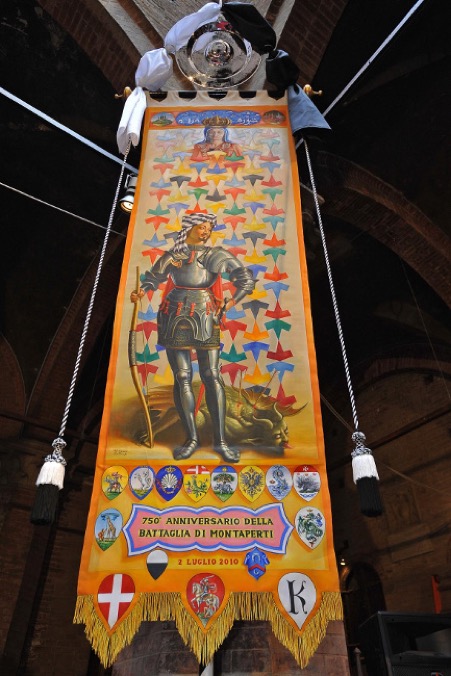
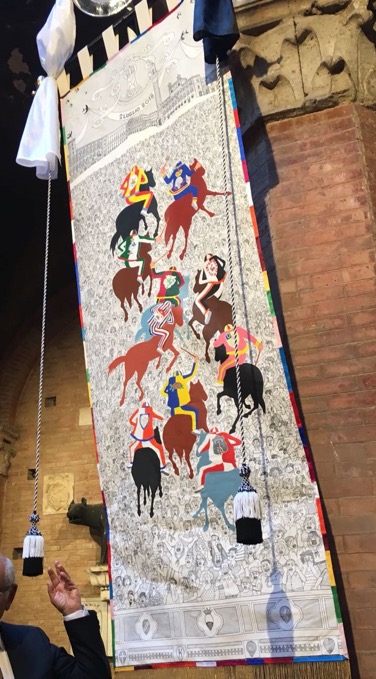
The Palio prize is called a "Drappellone" or large banner. It is a painted canvas designed each year by a different artist, and it takes pride of place in the winning contrada's museum.
The winning contrada heads towards the Santa Maria in Provenzano (after the July race) or towards il Duomo (after the August race) for the "Te Deum", the obligatory prayer of thanks.
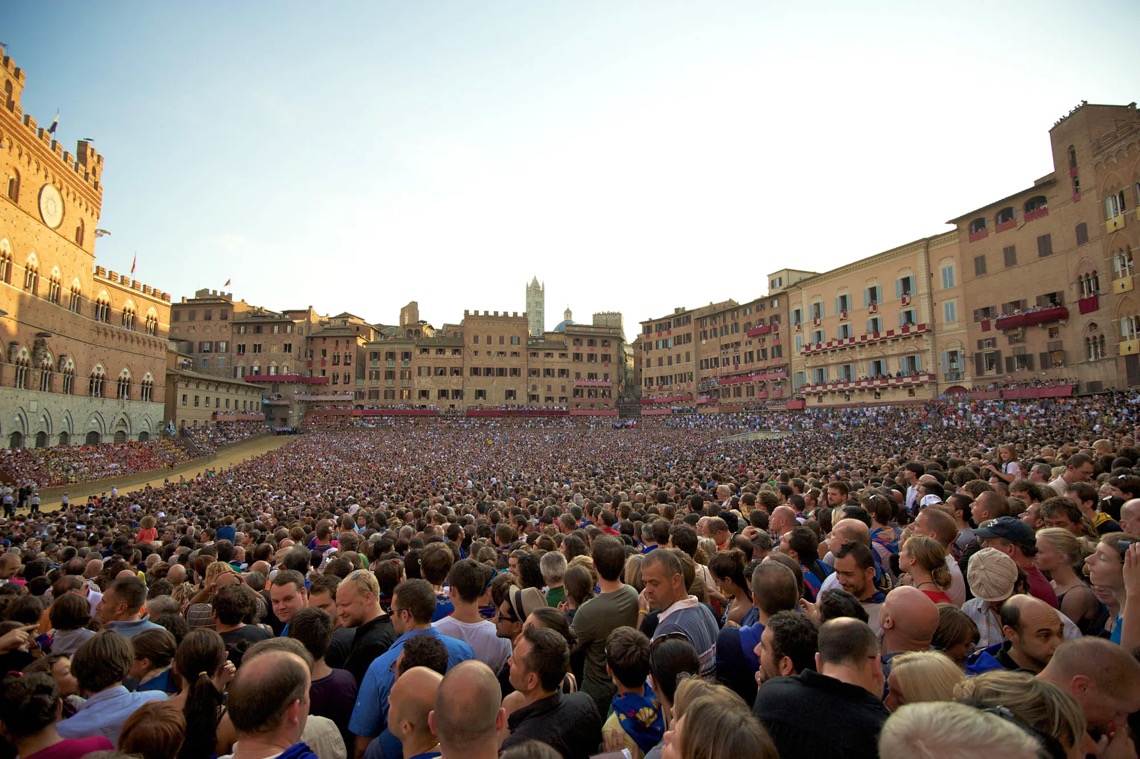
But just a word of warning, keep your eyes open or you might just miss the race!
I will admit that our visit to the Battistero di San Giovanni Battista and il Duomo was basically a walk-past. So I included the below photograph of the site as a reminder of what we missed and the fact that we must go back one day.

Our hotel
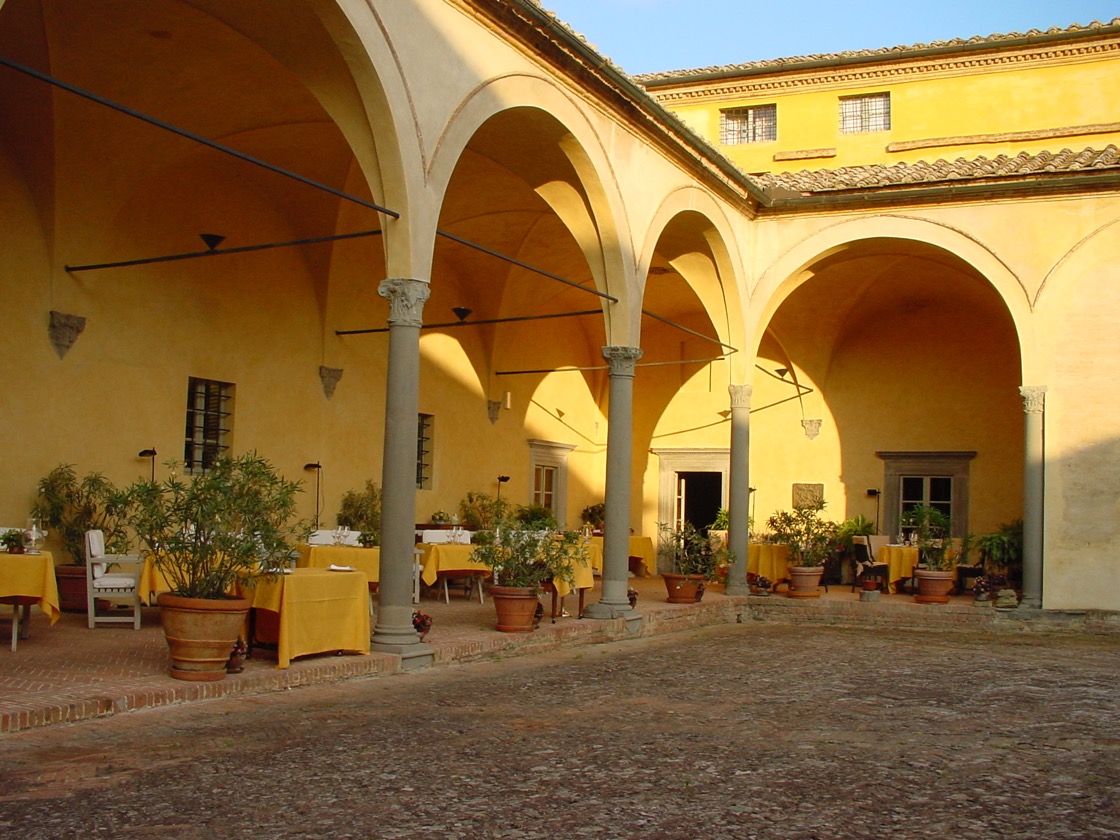
In addition to our super rapid visit to Siena we also managed to spend two nights in a wonderful, small 4-star hotel called Certosa di Maggiano. I can still remember breakfast and dinner on the covered terraces. I can't promise that the hotel is the same today, but my wife and I would certainly go back there again, if only in the hope of recapturing those blissful moments of peace in this troubled world. These are photographs from our visit in 2002.
